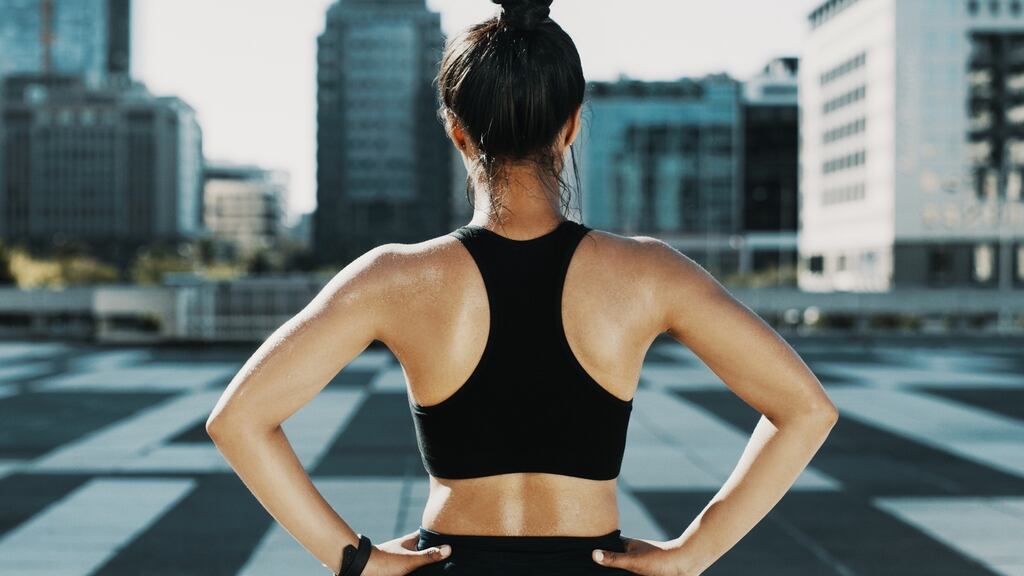It's safe to assume that Caitlin Moran spoke for many women when she detailed the glorious feeling that a woman experiences when she comes home after a day out in the world, removes her bra and flings it off for the evening (it's also a measure of a good friendship, she notes, if you can do the same in a pal's house).
Bras – and their similarly uncomfortable bedfellows, shapewear – have been designed to hoik, smooth, constrict, suppress and otherwise manipulate the female form into creating a pleasing silhouette. Something that – insert heavy air quotes here – makes clothes fit better. A way, in other words, for women to present their best, perkiest, curviest selves to the outside world. And now, it seems we are finally cracking open a crucial question: pleasing to whom?
And exactly what happens when the outside world no longer holds the significance that it once did? What happens to the humble bra when presenting ourselves to others often means little more than dressing from the shoulders up?
It’s already been established that in the era of working-from-home style, lockdown leisurewear has moved from simply being the stuff you wore to the gym to the stuff you wear to Zoom meetings. We have successfully bridged the sartorial gap between dressing for sheer comfort and avoiding slob territory. What’s more, we like it.
What it does mean is that shapewear, corsetry and push-up bras, once tools of sexy and feminine power, have evidently been on the wane. And no wonder.
Wearing this stuff is a sort of performance in and of itself, and one that’s primarily aimed at the gaze of others. If no-one is around to see it, why bother being harnessed and hoisted at all?
It would seem that utilitarian, more comfortable underwear has eclipsed the perennial popularity of shapewear, as well as underwired and push-up bras.
"There has been a significant shift in customer demand to comfort-led products," affirms Rachelle Hanley, lingerie buyer at Brown Thomas and Arnotts. "We've seen a lift in soft lingerie that still offers good support. We've also seen an uplift in brands that offer products that have flexible sizing such as one-size or non-cup sized styles.
Before the pandemic, around one in three M&S customers were buying non wired bras and bralettes. Now, nearly half of the chain's customers are opting for softer styles
“Sports bra sales have been incredible – reflective of the huge uptake in customer demand for activewear pieces,” she adds. “There has been a decline in demand for shapewear and hosiery due to the lack of social outings and events for everyone at the moment. We have definitely seen a shift in demand away from product that would be worn to work or socialising to what would traditionally be worn around the home – we’ve seen a significant demand for nightwear, loungewear and slippers over the last year.”
At Marks & Spencer, research shows that before the pandemic, around one in three M&S customers were buying non wired bras and bralettes. Now, nearly half of the chain’s customers are opting for softer styles.
“During lockdown sales of high-rise knickers, and softer non-wired bra styles such as bralettes have increased,” observes Soozie Jenkinson, head of design (Lingerie and Sleepwear) at Marks & Spencer.
It stands to reason that, as women have spent much of the last year in a sort of hibernation mode, that they would swap out any idea of bodily ideals for personal comfort and utilitarianism.
Whether the trend looks set to continue now that we’ve been freed from the tyranny of the restrictive bra, is another matter entirely. Helen Travers, owner of Contour Lingerie in Dublin’s Stillorgan, reckons that in the coming months, Irish women will likely go back to favouring the structured bra styles that they did before the pandemic.
In the last year, she has made “very little” sales in terms of corsetry or shapewear – something she attributes to people not attending weddings, Communions and conformations with regularity. However, she too has seen a palpable increase in sports bra sales.
Perhaps post-Covid we will see a surge in demand for glamorous underthings to supplant the freeform, non-wired bra of lockdown lounging
“I’m selling as many bras as I always did,” she explains. “In the last couple of months, particularly online, it’s changed back again to more structured bras,” she adds. “There was definitely a period where people were dressing a little bit sloppier and wearing softer bras under their clothes. But people are starting to wear nicer clothes again, and I think they are starting to realise that when you’re not wearing a structured bra, it doesn’t look that great under clothes. It’s all very well sitting at home, but people are starting to go out again.”
“What I’m seeing a lot of is women ringing and saying, ‘I’ve put on weight, tell me where I can get a bra that is not uncomfortable for me’. They do want to look better again.”
When Contour opened its doors again last June after the first lockdown, Travers says that she could “hardly cope” with demand. “People are constantly asking me when we are open for fittings again. I’m constantly on the phone fielding questions about it.”
After the 1918 pandemic, the Roaring 1920s with no shortage of hedonism and glamour came hot on its heels.
Perhaps post-Covid we will see a surge in demand for glamorous underthings to supplant the freeform, non-wired bra of lockdown lounging.
“Women want to spend money and they want to get back out there. They are desperate for a bit of hedonism, and when it comes to women and shopping, I reckon things will go mad,” Travers says.


















